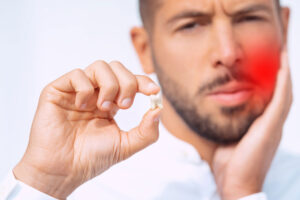Orthodontic treatment, whether with traditional braces or modern aligners, helps achieve a beautiful, well-aligned smile. However, it also introduces unique challenges in maintaining oral hygiene. Patients undergoing orthodontic treatment in Spring Hill, Lutz, Tampa, and Zephyrhills, Florida, should prioritize their dental health to prevent complications. Dr. Jeff Hameroff and the team at Just Pull It, an emergency dental clinic, share essential tips for caring for your teeth during orthodontic treatment.
Why Oral Hygiene Is Vital During Orthodontic Treatment
Orthodontic appliances like braces and aligners create additional spaces where food particles and plaque can accumulate. If left unchecked, this can lead to:
- Tooth decay and cavities
- Gum inflammation or gingivitis
- Decalcification (white spots on teeth)
- Bad breath
Maintaining good oral hygiene during treatment ensures not only the success of your orthodontic journey but also the long-term health of your teeth and gums.
Effective Brushing Techniques for Braces
Brushing your teeth becomes a more intricate process when braces are involved. You’ll need to clean around brackets and wires to remove trapped food particles effectively.
Steps for Brushing with Braces:
- Choose the right toothbrush: Use a soft-bristled toothbrush or an orthodontic-specific brush with V-shaped bristles.
- Brush at different angles: Hold your toothbrush at a 45-degree angle, focusing on cleaning above, below, and around each bracket.
- Don’t rush: Spend at least two minutes brushing, ensuring you cover all areas thoroughly.
- Upgrade to an electric toothbrush: If possible, use an electric toothbrush with a small head for a more effective clean.
For aligner users, brush your teeth and clean your aligners thoroughly after meals to prevent bacteria buildup.
Mastering the Art of Flossing with Orthodontics
Flossing can feel like a daunting task with braces, but it’s non-negotiable for keeping your gums healthy. Specialized tools can make flossing easier.
Helpful Flossing Tools for Braces:
- Orthodontic floss threaders: These help guide floss under wires.
- Water flossers: A stream of water removes debris and plaque from hard-to-reach areas.
- Interdental brushes: Ideal for cleaning between brackets and wires.
Make flossing a daily habit to prevent plaque from accumulating in spaces traditional brushing may miss.
Dietary Choices to Protect Your Smile
Orthodontic appliances require changes in eating habits to avoid damaging the hardware or harming your teeth.
Foods to Avoid During Treatment:
- Hard foods like nuts, popcorn, and hard candies
- Sticky foods such as caramels or taffy
- Crunchy foods like raw apples or carrots (cut these into small pieces instead)
- Sugary snacks that promote tooth decay
Instead, opt for softer, tooth-friendly options such as yogurt, mashed potatoes, eggs, and cooked vegetables. These are less likely to harm braces or aligners while keeping your teeth healthy.
Managing Discomfort and Emergencies
It’s common to experience mild discomfort when starting orthodontic treatment or after adjustments. To ease soreness:
- Rinse with warm saltwater to soothe irritated gums.
- Use orthodontic wax to cover sharp brackets or wires.
- Take over-the-counter pain relievers as needed.
If you experience severe pain or issues like broken brackets or wires, contact Just Pull It immediately for emergency care in Spring Hill, Lutz, Tampa, or Zephyrhills.
Professional Cleanings and Checkups
Regular visits to your dentist are crucial during orthodontic treatment. Professional cleanings remove plaque and tartar that home care can’t reach, reducing the risk of gum disease and cavities.
Your dentist will also monitor your progress and identify potential problems early. Aim for cleanings every three to six months, depending on your dentist’s recommendation.
Caring for Retainers Post-Treatment
Orthodontic care doesn’t end when braces are removed or aligners are complete. Retainers are essential for maintaining your results.
Retainer Care Tips:
- Clean your retainer daily with a soft toothbrush and mild soap or specialized cleaner.
- Avoid exposing retainers to high heat, which can warp the material.
- Store your retainer in its case when not in use to prevent damage or loss.
By committing to retainer care, you can preserve your new smile for years to come.
Preventing Common Orthodontic Issues
Orthodontic treatment often brings minor challenges, but they can be avoided with proper care:
- White spots: Minimize sugar intake and brush regularly to prevent decalcification.
- Bad breath: Keep aligners clean and practice good oral hygiene.
- Broken hardware: Avoid hard and sticky foods that could damage braces.
Being proactive helps you stay on track without unnecessary delays or complications.
Ensuring Long-Term Success
Caring for your teeth during orthodontic treatment requires diligence and consistency. By incorporating these habits into your routine, you’ll protect your teeth and gums while ensuring the success of your treatment. If you encounter any issues along the way, remember that Just Pull It is here to provide emergency care and expert advice in Spring Hill, Lutz, Tampa, and Zephyrhills, Florida.
Sources
- Al Mulla, A. H., & Kharsa, S. A. (2017). Oral Hygiene Compliance for Orthodontic Patients. Journal of Orthodontic Science.
- Benson, P. E., et al. (2013). Fluoride and Decalcification in Orthodontic Patients. Cochrane Database of Systematic Reviews.
- Kaczor-Urbanowicz, K. E., et al. (2021). Oral Care Innovations for Orthodontic Patients. Clinical Oral Investigations.



































